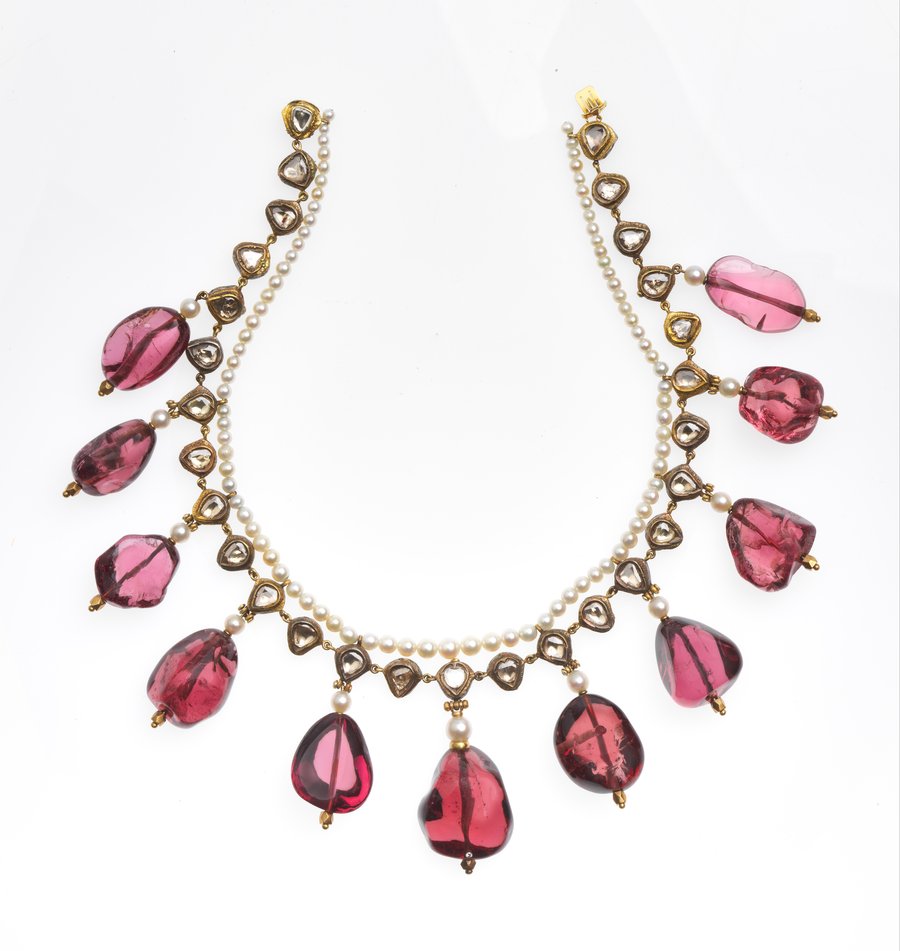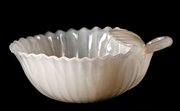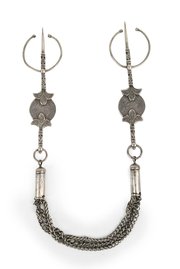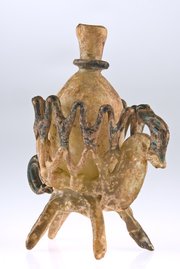
Necklace
Museum of Islamic Art
- Title:
- Necklace
- Patron:
- Akbar I, Shah Jahan, Jahangir
- Production place:
- India
- Date:
- 1900 - 1999
- Period:
- Mughal
- Title:
- Necklace
- Patron:
- Akbar I, Shah Jahan, Jahangir
- Production place:
- India
- Date:
- 1900 - 1999
- Period:
- Mughal
- Material:
- Gold, Spinel, Diamond, Pearl, Enamel, Solder
- Technique:
- Gem setting, Enamelling, Kundan, Cutting, Soldering, Gemstone drilling
- Dimensions:
- 7.9 × 38.5 cm
This necklace includes eleven spinel beads, collectively weighing 877.23 carats, suspended from a double-stranded chain, one strand of pearls, and the other of table-cut diamonds backed with enamel. The spinel beads are dated to the early 11th century AH/17th century CE while the attached necklace is likely 14th century AH/ 20th century CE. Three of the spinel beads have been inscribed, indicating their origins in the Mughal treasury. The second bead from the right has the name Jahangir shah-i Akbar shah, and is dated 102(5?) AH, equivalent to 161(6-17?) CE. The third bead from the right is inscribed with three times: Jahangir shah-i Akbar shah, 1016; Lal-i muhammadi, Aqa Hafez Khairullah; and sahib qiran-i sani, 1043 [2nd lord of the conjunction, referring to Shah Jahan]. Its dates of 1016 AH and 1043 AH are equivalent to 1607-08 CE and 1633-34 CE, respectively. The third bead from the left is again inscribed Jahangir shah-i Akbar shah, and dated 1029 AH corresponding to 1619-20 CE. Spinels have historically come from Badakhshan, a district in Afghanistan, and were favoured by the Mughal emperors who generally left them uncut. It appears from early 11th-century AH/ 17th-century CE portraits of Jahangir (r. 1014-1037 AH/r. 1605-27 CE) and Shah Jahan (r. 1037-1068 AH/r. 1628-58 CE) that they were worn strung onto necklaces, often in combination with pearls and diamonds. The tradition of inscribing spinels is an ancient Iranian practice that continued throughout the 9th century AH/ 15th century CE under the Timurids, and was then inherited by their descendants, the Mughals.



